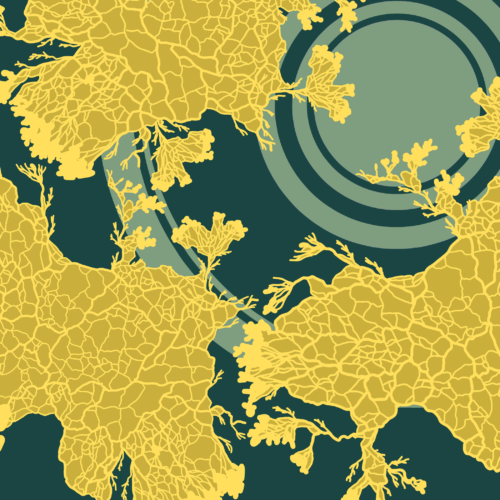Art courtesy of Anasthasia Shilov.
Let’s talk about slime.
And no, not the kind that went viral on ASMR TikTok. Today, we’re diving deep into the world of Physarum polycephalum, an intelligent unicellular eukaryote with the ability to solve complex problems, and how it is changing our perception of memory one tube at a time.
The concept of memory is often associated with complex organisms: humans reminiscing about failed family picnics or those heartfelt videos of dogs jumping into the arms of their owners after years of separation. We love to see it. But it turns out that the conceptualization of memory may be different from what most expect. Researchers Mirna Kramar and Karen Alim at the Max Planck Institute for Dynamics and Self-Organization and the Technical University of Munich recently investigated Physarum and the way it encodes memory of food sources through rapid communication between its tube systems.
Spoiler alert—and apologies to the viral military dog reuniting clips—Physarum is coming for your brand.
Physarum is a network-shaped organism that explores its environment with a vast array of tubes, rapidly and constantly reorganizing its body plan to pin down a food source, all while maintaining the ability to find the shortest possible path between nutrients. Yet, even though Physarum seems like just another slime mold, Kramar chuckles at the memory of working with the organism.
“Physarum is extremely dynamic and very, very moody. It really doesn’t like being under the microscope. It will run away, actually physically run away. It’s hilarious,” Kramar said.
Kramar began working with Physarum years ago at the beginning of her PhD, carrying out various exploratory projects and recording observations about this capricious creature. During one of these observatory studies, she noticed that Physarum was running to the edge of the petri dish. Not wanting the experiment to conclude with Physarum committing scientific death through a heroic escape, Kramar attempted to lure it back down with a food source.
It worked. After Physarum consumed the food source and began moseying elsewhere, Kramar noticed that a circular arrangement of big tubes had formed exactly where the food source was. And this tube imprint didn’t fade, even after Physarum continued its journey around the petri dish. “Observing this I had two questions: how does this imprint come around in the first place, and is it useful?” Kramar said.
The researchers began observing the changes in tube diameter before and after the addition of a food stimulus, finding that there was an internal redistribution of mass: tubes closer to the food got much larger, whereas peripheral tubes became smaller. And even long after the stimulus had been consumed, the larger tubes remained enlarged. But how did this happen?
They found that the propagation of tube dilation across the network was mediated through a cytoplasmic flow, which carried a chemical agent that softened the tube walls. This cytoplasmic flow is critical to Physarum, transmitting both nutrients and information through chemical signaling.
After determining that the propagation was due to cytoplasmic flow, the researchers asked the second main question: does the observed imprint constitute memory?
Hypothesizing that the tubes could represent Physarum’s memory, given that they remained as an imprint even after the stimulus disappeared, the researchers analyzed three large tubes in a sample of Physarum. One tube was directly connected to a group of tubes arranged in fan shape to forage towards the bottom of the microscopic window. When Kramar placed a food stimulus towards the top of the sample, that tube attached to the fan got increasingly small whereas the two tubes closer to the stimulus increased in size. This was critical evidence for the memory of Physarum. “The selection of which big tubes are important shows something more than just an imprint or a remnant of the stimulus,” Kramar said.
Ruminating on the impact of this discovery, Kramar discussed the potential implications of Physarum on primitive memory. “This reminded us of synaptic plasticity and synaptic facilitation, creating long-term memories from short-term memories. That’s very interesting because Physarum has some kind of very primitive membrane potential going on that we don’t know much about,” Kramar said.
Of course, the implications of Physarum’s memory don’t end with this project. Kramar predicts potential impacts on fields such as soft robotics. Although the concept is still in its beginning stages, she proposes that Physarum’s self-navigation based on attraction to chemical stimuli could be used to guide technological advances in arterial surgeries. For example, robots could be designed to crawl and adapt to the arterial environment, following a chemical stimulus that the condition creates.
So yes, maybe we can all have a little bit of Physarum within us someday.
Citation: Kramar, M., & Alim, K. (2021). Encoding memory in tube diameter hierarchy of living flow network. Proceedings of the National Academy of Sciences of the United States of America, 118(10), e2007815118. https://doi.org/10.1073/pnas.2007815118

